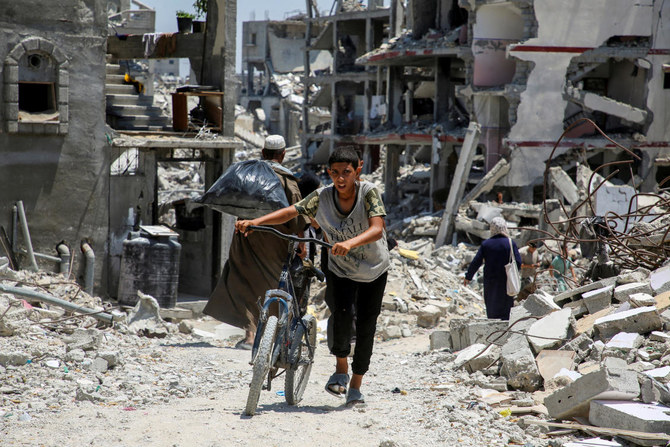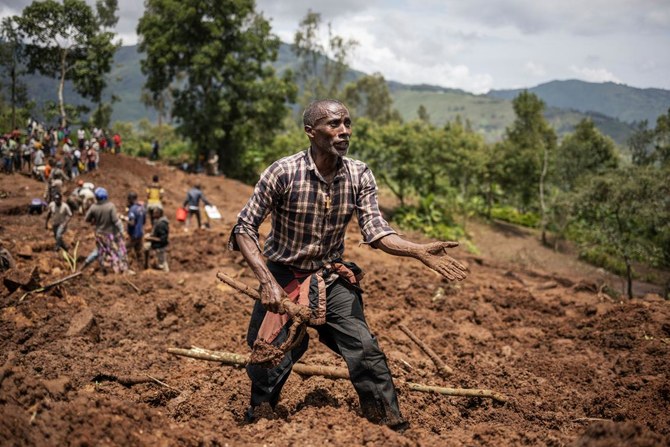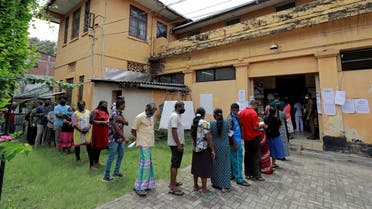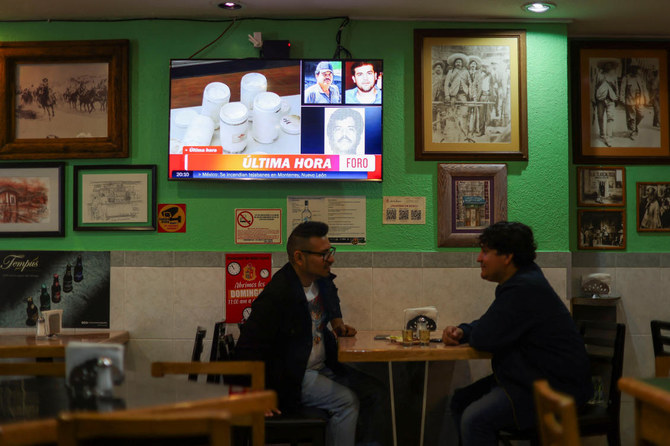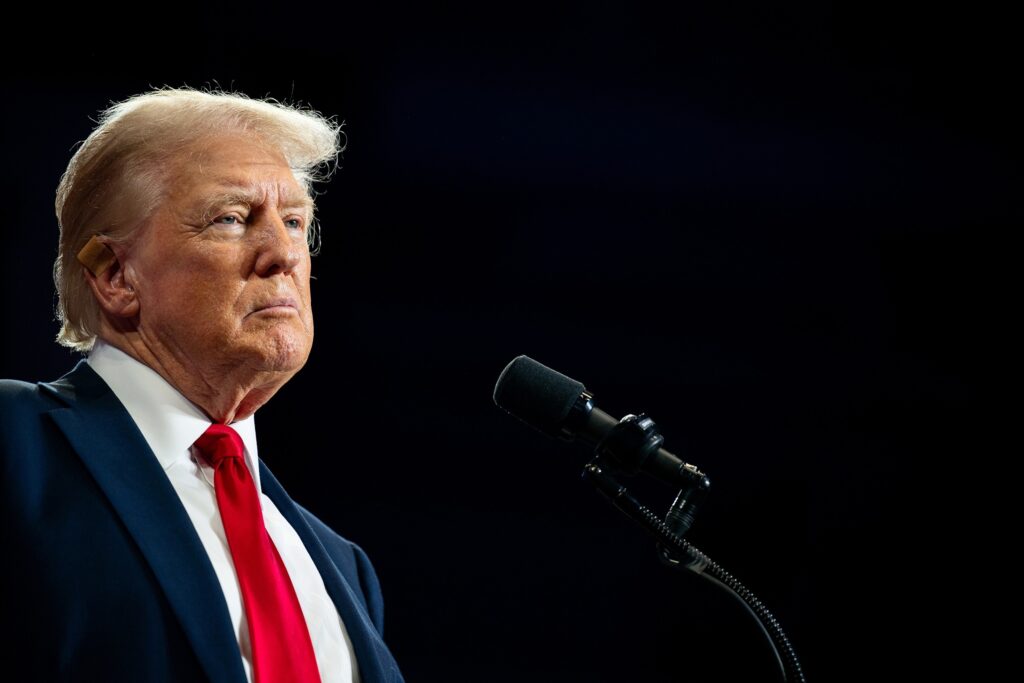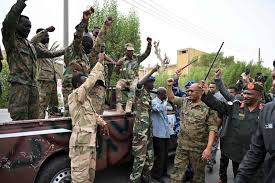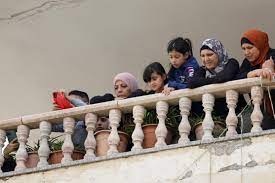
RAMALLAH/JERUSALEM (Reuters): Violence in the occupied West Bank has surged since Israel began bombarding the Gaza Strip and clashing with Hezbollah at the Lebanon border, fuelling concerns the flashpoint Palestinian territory could become a third front in a wider war.
Israel is waging war against the militant Hamas group in the Palestinian enclave of Gaza, but Israeli soldiers and settlers pulled out of Gaza in 2005. Israel still occupies the West Bank, captured with Gaza in a 1967 Middle East war.
Hamas, which controls Gaza, killed more than 1,400 people in a surprise attack in Israel on Oct. 7, prompting an Israeli bombardment that has killed 3,500 in Gaza. Israel is preparing a full-scale ground assault on Gaza to destroy Hamas.
Western countries supporting Israel fear a wider war that would open up Lebanon, with its Iran-backed group Hezbollah, as a second front and the West Bank as what Israeli media call a potential third front.
Clashes between Israeli soldiers and settlers and Palestinians have already turned deadly. More than 70 Palestinians have been killed in West Bank violence since Oct. 7 and Israel has arrested more than 800 people.
Israeli forces raided and carried out an air strike in a Palestinian refugee camp in the West Bank on Thursday, killing at least 12 people, Palestinian officials said, and Israeli police said an officer was killed during the raid.
The violence poses a challenge to both Israel and to the Palestinian Authority (PA), the only Palestinian governing body recognised internationally which is headquartered there.
The Israeli military said it was on high alert and bracing for attacks including by Hamas militants in the West Bank.
Hamas was trying to “engulf Israel in a two- or three-front war”, including the Lebanese border and the West Bank, military spokesperson Lieutenant Colonel Jonathan Conricus told Reuters. “The threat is elevated,” he said.
‘GIVE PEOPLE WEAPONS. LET THEM CLASH’
In Ramallah, rare chants this week supporting the military wing of Hamas – a rival of the PA’s ruling Fatah party – showed a growing appetite for armed resistance.
“Give people weapons. Let them clash. We’ll show what we can do,” said Salah, a 20-year-old demonstrator who gave only his first name.
Fatah official Mowafaq Sehweel told Reuters: “We should let go of the reins and use whatever means to fight occupation.”
Others are less ready to fight.
Nizar Mughrabi, owner of an architecture firm, said he was disgusted by Israel’s assault on Gaza but not ready to pick up a gun.
“Netanyahu wants to fight, Haniyeh wants to fight – put them in the desert with guns and let them shoot each other,” he said, referring to Israeli Prime Minister Benjamin Netanyahu and Hamas leader Ismail Haniyeh.
Palestinian officials and Israeli analysts say a number of factors are both helping to ignite tensions, but conversely also limiting their scope, for now.
One is the hundreds of arrests Israel has made.
Hamas cited attacks on West Bank Palestinians and arrests this year as part of its reason for attacking on Oct. 7.
But the arrests have also limited West Bank violence, said Mustafa al-Khawaja, a 52-year-old anti-settlement activist.
“In Gaza, there’s enough time (for Hamas) to organise militarily,” he said. “Here, the occupation (Israel) can clamp down on a daily basis. It leaves no space to build up military or political forces.”
WEST BANK A COMPLEX PATCHWORK
While Hamas tightly controls besieged Gaza, the West Bank is a complex patchwork of hillside cities, Israeli settlements and army checkpoints that split Palestinian communities.
Israel occupied the territory in 1967 and has divided it into large areas it controls, small areas where Palestinians have full control and areas where Palestinians and Israeli forces divide civil and security duties.
Between the seat of power in Ramallah and poorer peripheral areas, there are multiple views on the benefits of violence.
Desperate young men in refugee camps are more willing to fight than those in Ramallah where businessmen and senior Palestinian officials stand to lose from a spiral of violence.
“My business is already suffering because of the unrest,” Mughrabi said.
Another key factor in stemming violence is Israel’s security agreement with 87-year-old President Mahmoud Abbas’s PA.
Abbas condemned Israel’s assault on Gaza while his security forces cracked down on demonstrations. Fatah has not issued public calls for armed resistance.
“The PA wants to keep peace and is worried that marches of thousands of people could quickly turn into hundreds of thousands,” said Palestinian political analyst Hadi al-Masri.
He added that PA officials do well financially and rely on arrangements with Israel to get paid.
Should Abbas lose his grip or become ill in his old age, the situation could deteriorate, he said.
‘LONE WOLVES’
Lior Akerman, a former officer in Israel’s internal security service the Shin Bet, said fears over West Bank unrest predated the Hamas war.
Hamas for years had been trying to “do all it can to activate terrorists in the West Bank,” he said.
Akerman acknowledged, however, that security measures had been tightened since the Gaza bombardment began, saying that the most recent round of arrests might not have happened under normal circumstances.
“Last night the army … took around 100 terrorists in the West Bank. In regular days … the Shin Bet would arrest only those they knew were preparing terror attacks,” he said.
One worry for Israel in the West Bank is “lone wolf” attacks from among Palestinians who have disparate local loyalties but an overall contempt for Israeli occupation, analysts say.
Recent surveys have shown overwhelming public support among Palestinians for armed groups, including local militias that include members from traditionally separate factions.
Even before the current Gaza crisis, the West Bank had seen a surge in violence.
Israel stepped up military raids and a spate of Palestinian attacks targeted Israelis. The 2023 Palestinian death toll until Oct. 7 was over 220 and at least 29 people in Israel had been killed, according to UN records.

